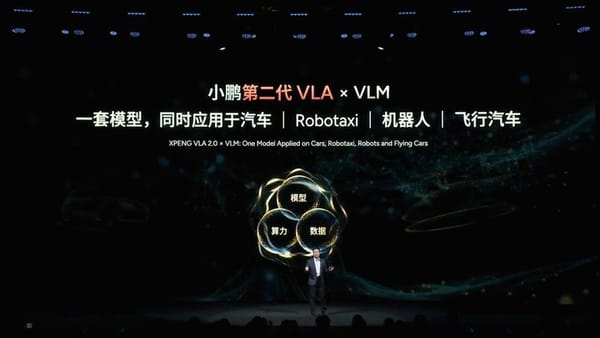Build Your Own: A Step-by-Step Guide to an Android Personal Voice Assistant with Open-Source Tools

Introduction
Most commercial voice assistants process your voice in the cloud before responding.
By using open‑source tools, you can run everything locally on your phone — improving privacy, speed, and giving you full control.
In this tutorial, you’ll build a fully local Android voice assistant using:
- Whisper – Automatic Speech Recognition (ASR)
- MLC LLM – On-device reasoning
- System Text-to-Speech (TTS) – Android’s built-in voice output
Your assistant will be able to:
- Understand voice commands offline
- Speak responses aloud
- Perform tool-calling actions (control devices, send messages)
- Store personal memories
- Use RAG to answer from your own notes
- Execute multi-step workflows (e.g., morning briefing)
We’ll use Termux to run this entirely on Android — no cloud required.
---
Table of Contents
- System Overview
- Requirements
- Step 1 – Test Microphone & Audio
- Step 2 – Install & Run Whisper
- Step 3 – Install Local LLM with MLC
- Step 4 – Local Text-to-Speech (TTS)
- Step 5 – Core Voice Loop
- Step 6 – Tool Calling
- Step 7 – Memory & Personalization
- Step 8 – Retrieval-Augmented Generation (RAG)
- Step 9 – Multi-Step Agent Workflow
- Conclusion & Next Steps
---
System Overview

Flow:
- Mic input → `Whisper` → text
- Local LLM → understands intent
- Tool calls for actions (optional)
- System TTS → speaks result
Key Concepts:
- ASR – convert speech to text
- LLM – offline reasoning
- TTS – convert text to audio
---
Requirements
You need familiarity with:
- Basic command line navigation
- Minimal Python scripting
You do NOT need:
- ML/model experience
- Neural network knowledge
- Audio engineering skills
Hardware:
- Android phone (Snapdragon 8+ Gen1 recommended)
- Termux installed
- Python 3.9+ in Termux
- 4–6 GB free storage
Why? Whisper + LLaMA models run locally; newer chips handle faster, cooler inference.
---
Install Base Tools
pkg update && pkg upgrade -y
pkg install -y python git ffmpeg termux-api
termux-setup-storage---
Step 1 – Test Microphone & Audio
Purpose
Verify mic & speaker access before building the pipeline.
Core Commands:
# Record 4 seconds
termux-microphone-record -f in.wav -l 4 && termux-microphone-record -q
# Play back
termux-media-player play in.wav
# Speak via system TTS
termux-tts-speak "Hello, local assistant is ready."---
Step 2 – Install & Run Whisper
Install
pip install openai-whisper
# If issues:
pip install faster-whisperTest Script – `asr_transcribe.py`
import sys
try:
import whisper
use_faster = False
except Exception:
use_faster = True
if use_faster:
from faster_whisper import WhisperModel
model = WhisperModel("tiny.en")
segments, info = model.transcribe(sys.argv[1])
text = " ".join(s.text for s in segments)
print(text.strip())
else:
model = whisper.load_model("tiny.en")
result = model.transcribe(sys.argv[1], fp16=False)
print(result["text"].strip())Run:
termux-microphone-record -f in.wav -l 4 && termux-microphone-record -q
python asr_transcribe.py in.wav---
Step 3 – Install Local LLM with MLC
Install & Configure
git clone https://github.com/mlc-ai/mlc-llm.git
cd mlc-llm
pip install -r requirements.txt
pip install -e pythonDownload model:
mlc_llm download Llama-3-8B-Instruct-q4f16_1Test Script – `local_llm.py`
from mlc_llm import MLCEngine
import sys
engine = MLCEngine(model="Llama-3-8B-Instruct-q4f16_1")
prompt = sys.argv[1] if len(sys.argv) > 1 else "Hello"
resp = engine.chat([{"role": "user", "content": prompt}])
print(resp.get("message", resp) if isinstance(resp, dict) else str(resp))Run:
python local_llm.py "Summarize building a local assistant"---
Step 4 – Local Text-to-Speech (TTS)
Use Android built-in:
termux-tts-speak "Local assistant speaking."---
Step 5 – Core Voice Loop
File: `voice_loop.py`
import subprocess
def run(cmd):
return subprocess.check_output(cmd).decode().strip()
print("Listening...")
subprocess.run(["termux-microphone-record", "-f", "in.wav", "-l", "4"])
subprocess.run(["termux-microphone-record", "-q"])
text = run(["python", "asr_transcribe.py", "in.wav"])
reply = run(["python", "local_llm.py", text])
try:
subprocess.run(["python", "speak_xtts.py", reply])
subprocess.run(["termux-media-player", "play", "out.wav"])
except:
subprocess.run(["termux-tts-speak", reply])---
Step 6 – Tool Calling
Tools – `tools.py`
import json
def add_event(title, date):
return {"status": "ok", "title": title, "date": date}
TOOLS = {"add_event": add_event}
def run_tool(call_json):
data = json.loads(call_json)
name = data["tool"]
args = data.get("args", {})
if name in TOOLS:
result = TOOLS[name](**args)
return json.dumps({"tool_result": result})
return json.dumps({"error": "unknown tool"})---
Step 7 – Memory & Personalization
Simple KV store – `memory.py`
import json
from pathlib import Path
MEM_PATH = Path("memory.json")
def mem_load():
return json.loads(MEM_PATH.read_text()) if MEM_PATH.exists() else {}
def mem_save(mem):
MEM_PATH.write_text(json.dumps(mem, indent=2))
def remember(k, v):
mem = mem_load(); mem[k] = v
mem_save(mem)---
Step 8 – Retrieval-Augmented Generation (RAG)
pip install chromadbExample – `rag.py`:
from chromadb import Client
client = Client()
notes = client.create_collection("notes")
notes.add(documents=["Contractor quote was $42000 for extension."], ids=["q1"])
results = notes.query(query_texts=["extension quote"], n_results=1)
print(results["documents"][0][0])---
Step 9 – Multi-Step Agent Workflow
Example: Morning briefing
- Load agenda from JSON
- Summarize via LLM
- Speak aloud
- SMS partner via Termux
---
Conclusion & Next Steps
You now have:
- Offline ASR (Whisper)
- On-device LLM (MLC)
- Local TTS
- Tool calling
- Persistent memory
- RAG search
- Multi-step agents
From here:
- Add wake word detection
- Integrate with Home Assistant / IoT
- Enhance memory & DB use
You own the stack — local, private, extensible.
Would you like me to prepare a condensed quick-start cheat sheet version of this tutorial for rapid reference?




